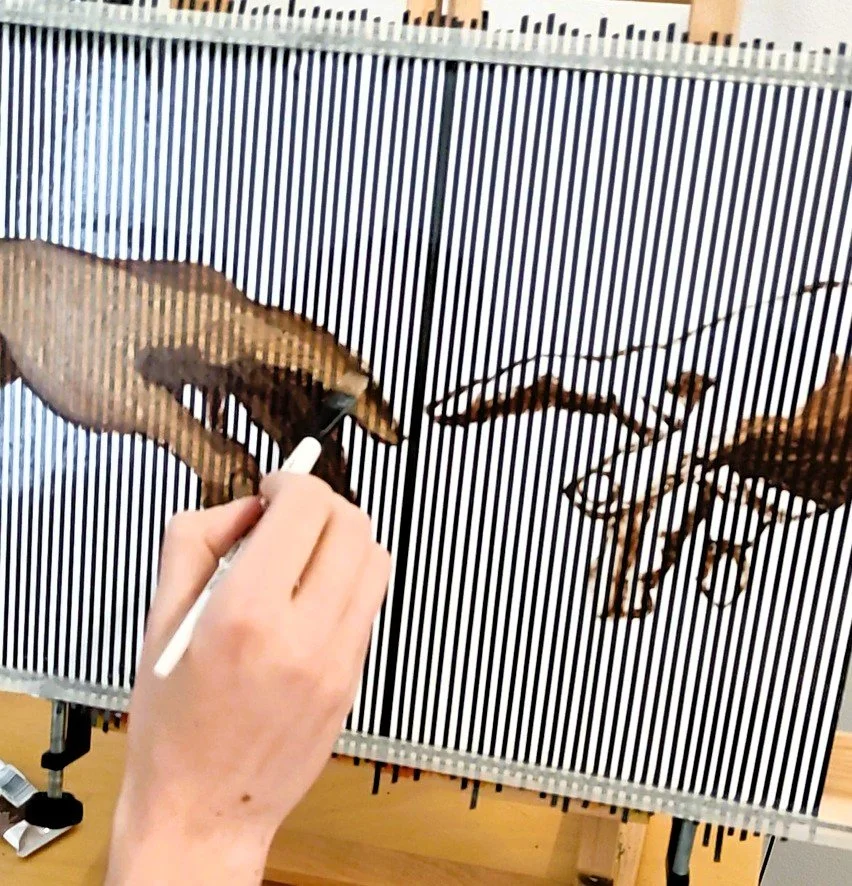#46: Back to the Brush
For weeks now, my studio has felt more like a laboratory than a place for painting. Sheets of Perspex stacked against the wall, scraps of acetate covered in lines, endless test prints and varnish trials — it’s been all about preparation, about inventing a process that didn’t exist before. Necessary, exciting, but not quite painting.
This week, that changed. I finally picked up the brush again.
From Experiments to Action
All those moiré tests — the trial and error, the sacrificial Perspex sheet, the careful notes — have been leading up to this moment. The beginning of my reinterpretation of Michelangelo’s Creation of Adam, where God’s hand and man’s hand never appear together.
The first strokes are on the panel now, and it feels like crossing a threshold. After so much background work, there’s something deeply fulfilling about moving paint across a surface, about watching the idea begin to take physical form.
The Difference Paint Makes
Experiments are important — they gave me the confidence that this painting could exist. But painting is different. It’s slower, more embodied, more human. The brush resists in a way Photoshop never can. The texture surprises in ways no test can predict.
And that’s the joy of it: the moment when an idea stops being theory and becomes material.
More Than the Image
This piece, with its disappearing hands, is about disconnection — about God and man unable to appear together in this age. But for me, it’s also about the opposite: the quiet connection that comes from painting itself.
Because no matter how complex the idea or how technical the preparation, the act of painting still brings me back to the core of why I make art in the first place. It’s fulfilling in a way nothing else is.
.M.
Be real.
Make art.
If you’d like to learn more about my creative process or see my latest work, feel free to reach out or check out the rest of my website.

